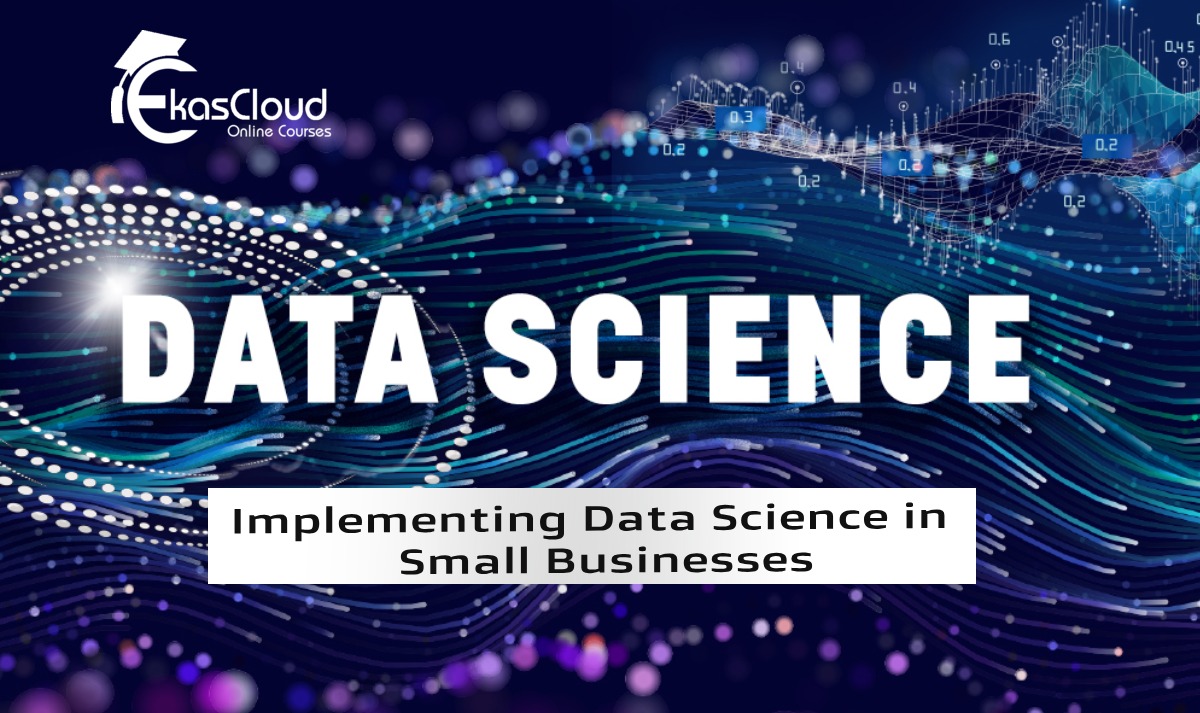
Building a Data-Driven Culture: Implementing Data Science in Small Businesses
Implementing data science in small businesses can greatly enhance their decision-making processes and overall competitiveness. By building a data-driven culture, small businesses can leverage data to gain insights, optimize operations, and improve customer experiences. Here are some steps to implement data science effectively:
1. Define clear objectives: Start by defining specific business objectives that can be addressed through data analysis. Identify key areas where data science can make a significant impact, such as marketing, sales, customer service, or operations. Having clear objectives will guide your data collection and analysis efforts.
2. Collect relevant data: Identify the data sources that are necessary to address your objectives. This may include data from customer interactions, sales transactions, website analytics, social media, or other relevant sources. Implement systems to capture and store this data securely.
3. Clean and prepare the data: Data often requires cleaning and preprocessing before it can be analyzed effectively. Remove duplicates, handle missing values, and address any inconsistencies in the data. This step ensures that the data is accurate and reliable for analysis.
4. Analyze the data: Use data analysis techniques to derive meaningful insights from the collected data. This can include descriptive statistics, data visualization, exploratory data analysis, and predictive modeling. Leverage tools like Python, R, or data visualization software to assist in the analysis.
5. Communicate findings: Transform the data insights into actionable information that can be understood by non-technical stakeholders. Create visualizations, dashboards, or reports that effectively communicate the findings. This step is crucial to gaining buy-in and support from decision-makers in your organization.
6. Integrate data-driven decision-making: Encourage decision-makers and employees to incorporate data insights into their decision-making processes. Train and educate staff on how to interpret and use data effectively. Foster a culture that values data-driven decision-making and encourages experimentation and learning.
7. Monitor and iterate: Continuously monitor the impact of data-driven decisions and measure key performance indicators (KPIs). Assess the effectiveness of implemented strategies and make adjustments as needed. Regularly evaluate the quality and relevance of the data you collect and refine your data collection processes accordingly.
8. Leverage external expertise: If your small business lacks in-house data science expertise, consider partnering with external consultants or hiring data science professionals. They can help guide your data-driven initiatives, provide insights, and ensure you're using the most appropriate methods and tools.
9. Embrace scalability: As your data-driven culture grows, ensure that your infrastructure and resources can scale accordingly. Consider cloud-based solutions for data storage and analysis to accommodate increasing data volumes. Explore automation and machine learning techniques to streamline processes and enhance productivity.
10. Stay informed: Keep up with the latest trends and advancements in data science and analytics. Attend conferences, webinars, and workshops, and encourage your team to engage in continuous learning. Staying informed will help you leverage new technologies and methodologies to stay competitive in the evolving data landscape.
11. Identify business objectives: Clearly define the goals and objectives you want to achieve through data science. Determine how data science can address challenges, improve processes, or create new opportunities within your organization.
12. Formulate questions: Develop specific questions that data analysis can answer to support your business objectives. These questions will guide the data collection and analysis process.
13. Data collection: Identify and gather the relevant data required to address your questions. This may involve extracting data from various sources such as databases, APIs, spreadsheets, or external data providers. Ensure data quality and integrity during the collection process.
14. Data preprocessing: Clean, transform, and prepare the collected data for analysis. This step involves handling missing values, removing outliers, standardizing formats, and resolving inconsistencies in the data. Data preprocessing is crucial to ensure accuracy and reliability in subsequent analyses.
15. Exploratory data analysis: Perform exploratory data analysis (EDA) to gain initial insights and understand the characteristics of the data. Visualize the data using charts, graphs, or other visual representations to identify patterns, correlations, and trends.
16. Feature engineering: Create new features or transform existing ones to improve the predictive power of the data. This step may involve applying mathematical functions, aggregating data, or creating derived variables that capture relevant information.
17. Model selection and training: Choose appropriate data modeling techniques based on the nature of your data and the questions you want to answer. Common techniques include regression, classification, clustering, or time series analysis. Train the selected models using the prepared data.
18. Model evaluation: Assess the performance of your trained models using appropriate evaluation metrics. This step helps you understand how well your models are performing and if they meet the desired criteria for accuracy, precision, recall, or other relevant metrics.
19. Model deployment: Implement the trained models into your business processes. This could involve integrating them into existing systems, creating APIs for real-time predictions, or developing user interfaces for interactive decision-making tools.
20. Monitor and iterate: Continuously monitor the performance of your deployed models and evaluate their effectiveness in addressing your business objectives. Collect feedback and make improvements as necessary. Data science is an iterative process, and ongoing monitoring and iteration are crucial for maintaining relevance and accuracy.
Remember that implementing data science in small businesses is an iterative process. Start small, learn from your initial efforts, and gradually expand your data-driven initiatives. Over time, you'll develop a culture that embraces data, enabling your business to make more informed decisions and gain a competitive edge.







